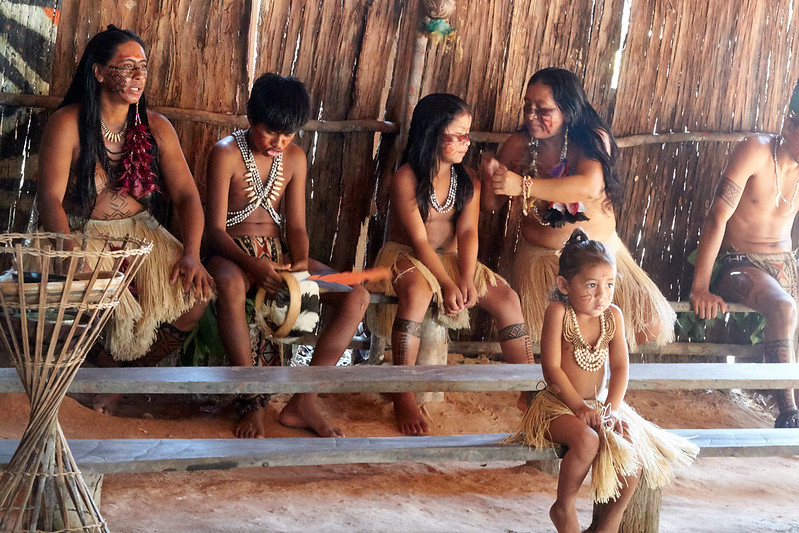Amazon Deforestation Undermines Indigenous Rights in Brazil
 Brazil shares a complex history with its indigenous population that spans centuries. The country contains approximately 60% of the Amazon rainforest and houses around 305 indigenous tribes. Throughout the 20th century, the intersection of indigenous rights, natural resource management and economic development has been navigated in Brazil.
Brazil shares a complex history with its indigenous population that spans centuries. The country contains approximately 60% of the Amazon rainforest and houses around 305 indigenous tribes. Throughout the 20th century, the intersection of indigenous rights, natural resource management and economic development has been navigated in Brazil.
Background to Indigenous Rights in Brazil
Brazilian policy aimed to balance development needs with indigenous rights and environmental protection. This approach shifted dramatically in 1964 when military forces successfully staged a coup and established a dictatorship.
Almost immediately after seizing power, the regime prioritized economic growth through large-scale development projects. The government built highways, including the Trans-Amazonian road, promoted colonization programs, and opened the Amazon to mining, logging and agribusiness operations.
Officials adopted slogans such as “Integrar para não entregar” (“Integrate to avoid surrender”). This phrase reflected the regime’s belief that Brazil needed to occupy the Amazon to protect national interests. These policies brought severe consequences for indigenous communities.
Twenty-one years later, the military dictatorship was toppled and Brazil transitioned back into a democracy. When the democratic constitution was still in progress, indigenous advocates and allies, including the Catholic Church’s Indigenous Missionary Council (CIMI), had lobbied vigorously to enshrine indigenous rights to their ancestral lands. “CIMI has become one of the most important defenders of indigenous rights, focusing on land rights, self-organisation and health care in indigenous territories.”
Feasting on the Amazon
Reestablishing democracy and constitutional protections has not resolved these issues. Subsequent administrations continue to face pressure to accelerate economic growth in the Amazon interior. This development drives deforestation and displaces indigenous communities. Agribusiness and logging operations systematically destroy public and indigenous Amazon lands. The state of Rondônia exemplifies this pattern with one of Brazil’s highest deforestation rates.
The Pastoral Land Commission, which advocates for environmental protection through the Brazilian Catholic Church, documented increased violence linked to logging activities.
“Poor people who effectively produce on their small lands are systematically persecuted, expelled, threatened or killed in the interest of real estate speculation,” Raphael Bevilaqua, the Commission’s attorney in Rondônia wrote.
Global demand for cheap coffee, meat, and soy incentivizes these developments. Multinational corporate giants such as McDonalds, Sysco, JBS Foods and Wal-Mart actively benefit from land seizure and repurposing it for cattle use, according to Protean. One Brazilian journalist writes, “Both these broader incentives and direct investment have helped facilitate the Amazon’s destruction and promoted abuses against Indigenous peoples.”
Displacing the Kayapó and the Cost of Energy
One example of this dynamic is the construction of the Belo-Monte dam. The Brazilian government began to implement plans to construct hydroelectric dams on the Xingu River, in northern Brazil. In response, hundreds of Indigenous leaders from the Xingu basin – Kayapó, Juruna, Arara, and others – united in the town of Altamira for a historic protest meeting, the first of its kind. Completing the dam would effectively destroy the livelihoods of thousands as well as increase the risk of flooding villages.
Riding the 1989 global wave of protests, indigenous communities in the Amazon leveraged the rare opportunity to take their grievances to an international audience. Around the world, people responded with ardent pressure against the dam’s construction. The public outcry eventually led the World Bank to pull out of financing its construction. Eventually, the Brazilian government capitulated, a watershed moment. For the first time the indigenous peoples were successful in halting the destruction of ancestral land.
Reversing the Victory
Rising electricity demands coupled with public consciousness favoring cleaner solutions, lead to the dam’s construction entering the public dialogue once again. Indigenous communities began to coalesce: organizing protests, filing lawsuits, and lobbying FUNAI (analogous to the Bureau of Indian Affairs in the U.S.) against the construction. Even Sting, the British rockstar who headlined The Police, joined in their movement.
The construction went ahead in 2010 and five years later, the Brazilian government, facing substantial domestic and international scrutiny, launched an investigation into the dam’s construction. Investigation found that the dam’s main contractor, Norte Energia, had committed serious federal crimes. “In December, Brazil’s Public Federal Ministry, an independent state body, started legal proceedings to have it recognized that the crime of ‘ethnocide’ was committed against seven Indigenous groups during the building of the Belo Monte dam.”
Cautious Optimism
One tribe, the Kayapó, have been particularly vocal in halting plans to construct further dams in the region. In 2016, they scored a rare legal victory when a federal judge halted the construction of an expansion project.
The dam’s future remains uncertain as energy conglomerates and indigenous communities clash in the court system. Under President Luiz Inácio Lula da Silva, indigenous rights in Brazil have been given more consideration, but not concrete action. As of May 2025, no further construction has been initiated as the decision on construction rests with IBAMA (environmental regulation agency) to approve or deny the dam’s license.
Indigenous communities have once again banded together to oppose further degradation of the river. The Kayapaó have been successful in obtaining legal support from the Brazilian federal public defender’s office.
Advocates abroad like AIDA America and the Rainforest Foundation, are seeking to replicate the successful international pressure campaign of 1989 by amplifying indigenous voices to a global
audience.
The Future
As public awareness grows, advocacy networks are mobilizing and Indigenous leaders remain steadfast, placing Brazil at a pivotal moment. The impending decision on the dam is no longer just a yes-or-no vote—it is a chance to prove that economic growth can align with environmental stewardship.
– Max Marcello
Max is based in Pittsburgh, PA, USA and focuses on Good News and Celebs for The Borgen Project.
Photo: Flickr
